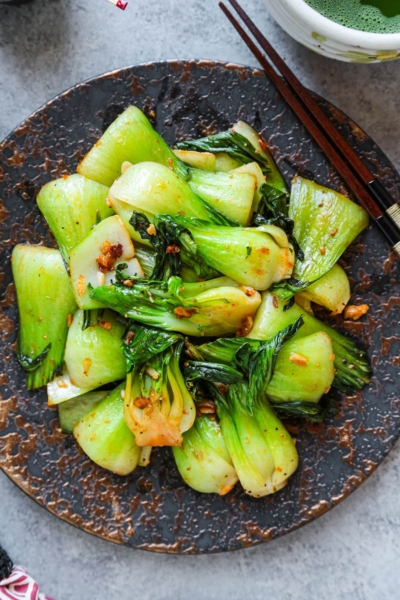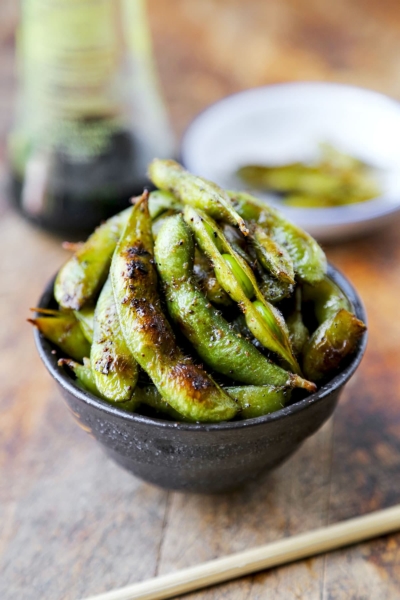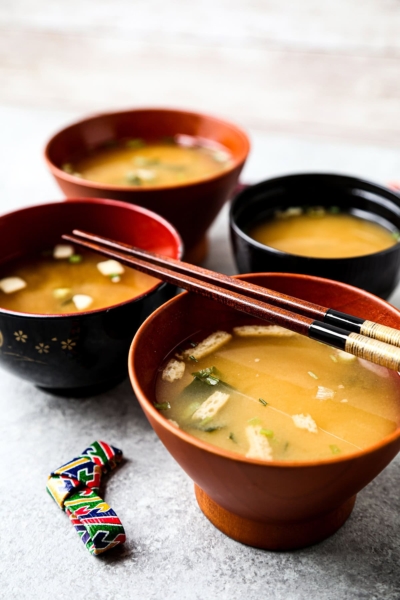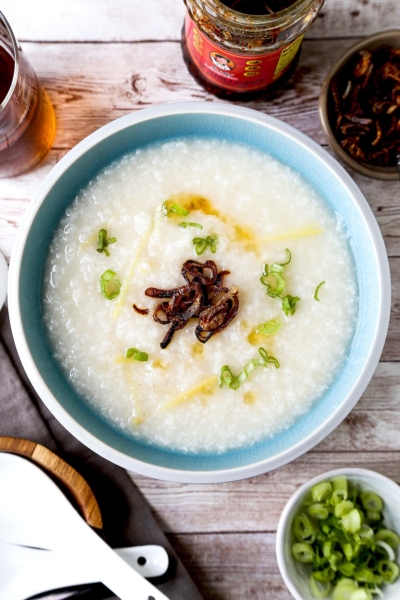I use mirin in everything from teriyaki sauce to dipping sauces for soba and udon. For me, it’s an essential ingredient for any Japanese pantry. Mirin’s natural sweetness pairs beautifully with the umami found in soy sauce and dashi – and that iconic combination of ingredients is the backbone of the Japanese flavor profile.

Table of Contents
What is Mirin?
Mirin (みりん) is a sweet rice wine made of fermented rice (koji), steamed rice and shochu. It is heavily used in Japanese cooking – both to add sweetness, and to temper some of the saltiness in other Japanese condiments like soy sauce. While it is similar to sake in some ways, mirin contains more sugar and less alcohol.
Mirin is a key ingredient in things like teriyaki sauce and eel sauce. But aside from adding sweetness alone, I believe that it allows the flavors of a dish to ‘sink in’ and fully develop.
Recipes Using Mirin
- Miso Ramen
- Homemade Ponzu Sauce ポン酢
- Zaru Soba (Cold Soba Noodles) ざるそば
- Japanese Cucumber Salad (Sunomono)
- Udon Soup (Kake Udon)
Pro Tip
Aside from just adding flavor to dishes, mirin also has a magic masking ability to make fish taste and smell less ‘fishy.’
Are Mirin and ‘Mirin Seasoning’ the Same Thing?
No, they are not the same.
- Mirin seasoning (commonly labeled aji-mirin) usually contains additional ingredients like alcohol, glucose, corn syrup and salt. Essentially, it tastes mirin-like. And since it’s cheap to produce, aji-mirin is plentiful (but inferior).
- Real mirin, or hon-mirin, is made with glutinous rice fermented in rice malt (koji) and mixed with shochu. It’s then left to mature for up to two months – and filtered to yield a light golden liquid.
I find the flavor of hon-mirin vastly superior to aji-mirin. That doesn’t mean I haven’t used mirin seasoning in a pinch! It just means I prioritize using proper mirin cooking wine when I have it handy in the pantry.
Mirin vs Rice Vinegar
Mirin contains alcohol and has a funky, slightly boozy and sweet sake-like flavor. It’s often used to balance the saltier ingredients in Japanese cooking.
Rice vinegar is alcohol free and more delicate in flavor. It’s more acidic and less sweet than mirin. It’s often used in Japanese salad dressing or in composed dipping sauces – and for pickling.
Where to Buy Mirin
Both aji-mirin and hon-mirin are available at most Asian grocery stores. Or you can pick it up online.
Popular Mirin Brands
Mizkan, Takara and Kikkoman are three of the largest producers in Japan.
Substitute for Mirin
When I don’t have mirin and need a little for a recipe, here are a couple of rough and ready options I’ve used:
- Use a mixture of dry white wine or dry sherry and sugar. About 1/2 teaspoon sugar per tablespoon of liquid should do the trick.
- Or mix a tablespoon of cooking sake with about 1/2 teaspoon of sugar.
Now, I personally don’t recommend using a substitute if mirin is one of the main ingredients in the sauce or dish. Since it has such a distinct taste, it will be hard to properly replicate.
However, sometimes home cooks just need to get dinner on the table – and we shouldn’t let an empty mirin bottle get in the way!














